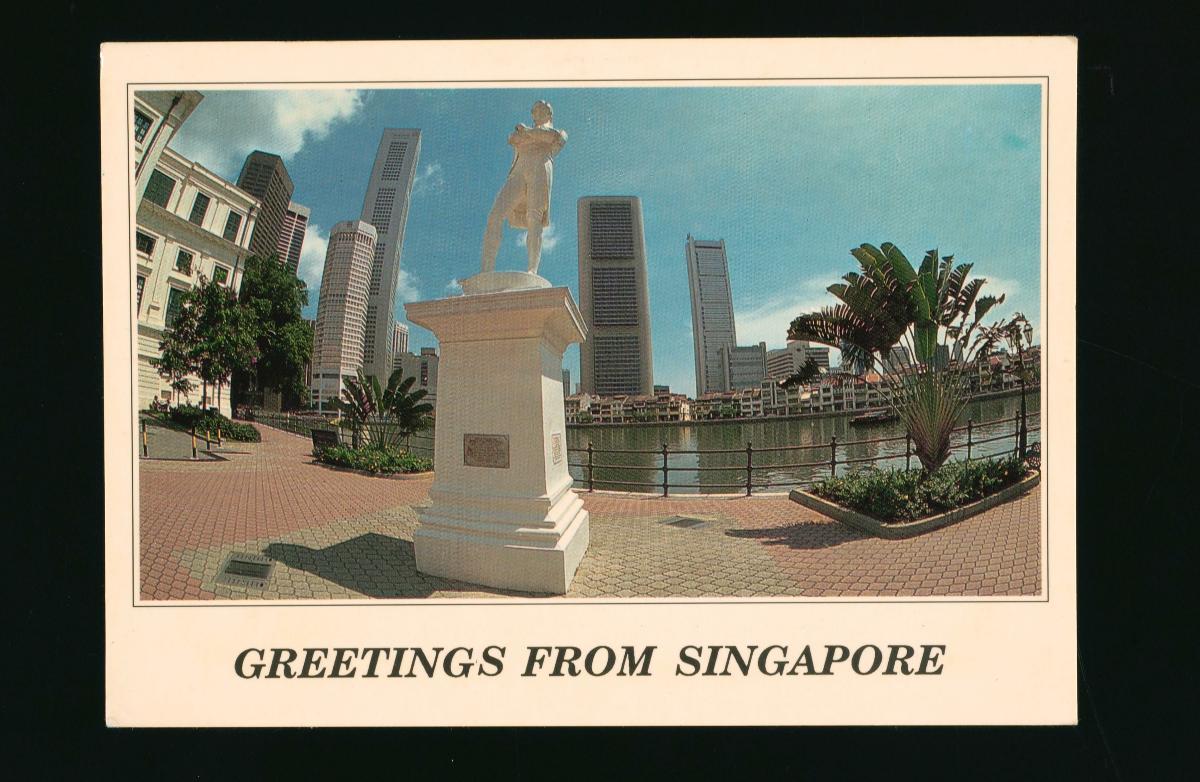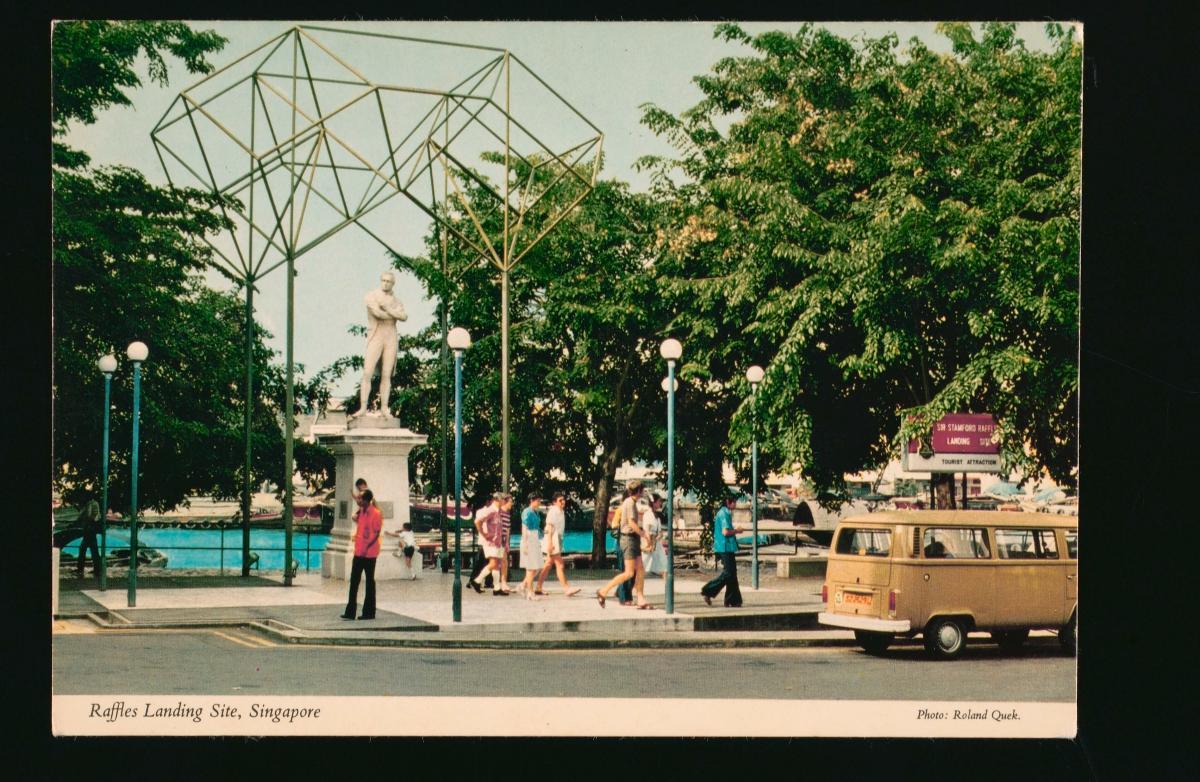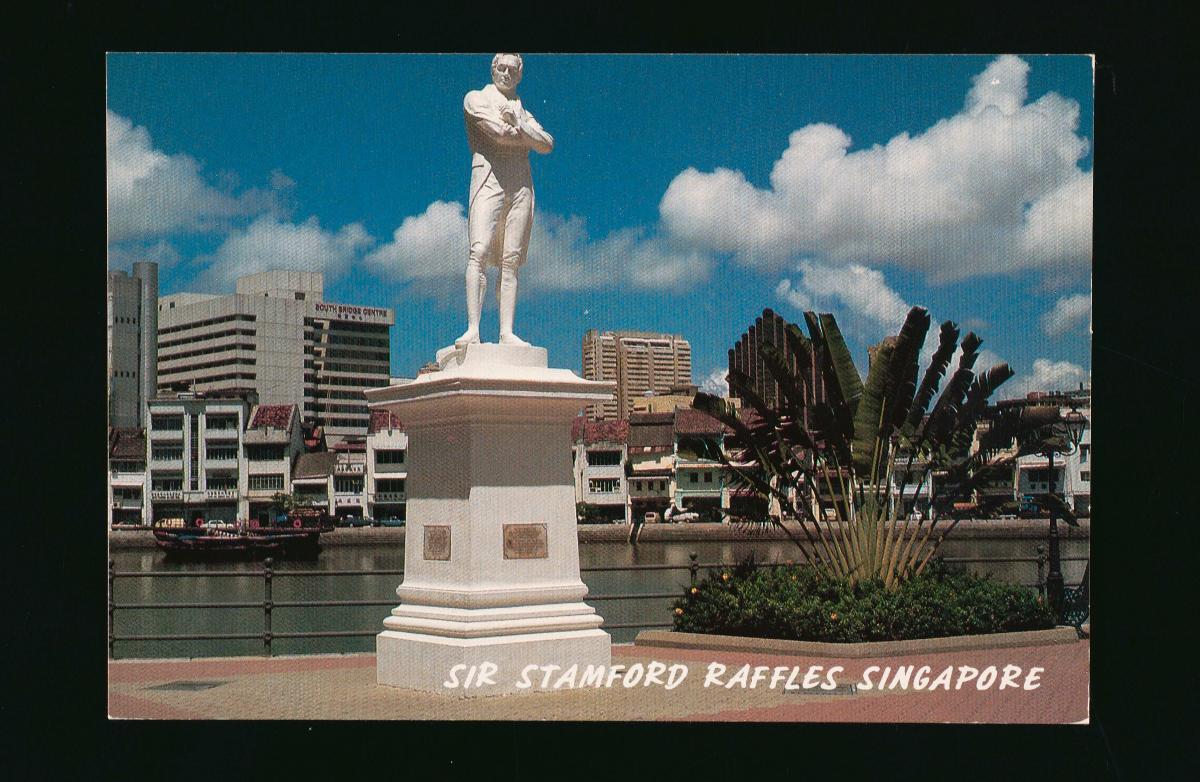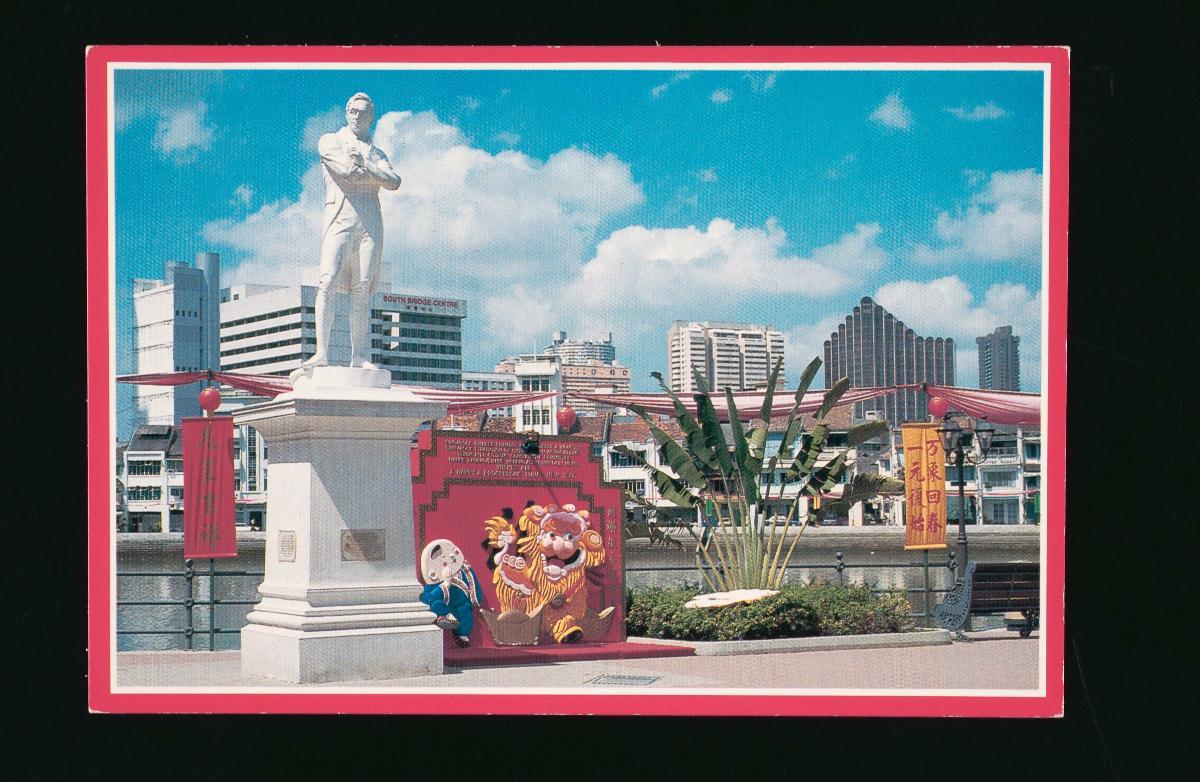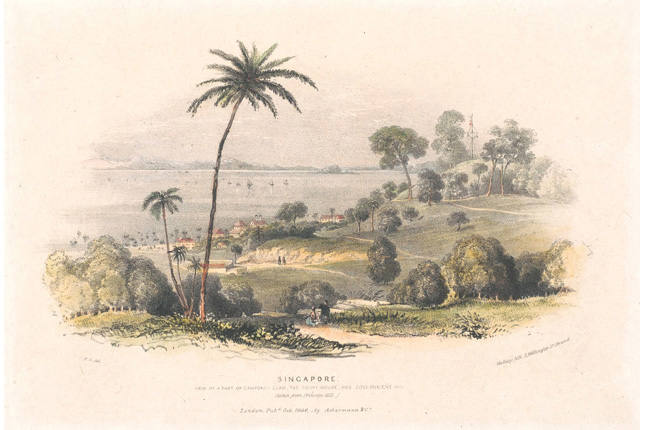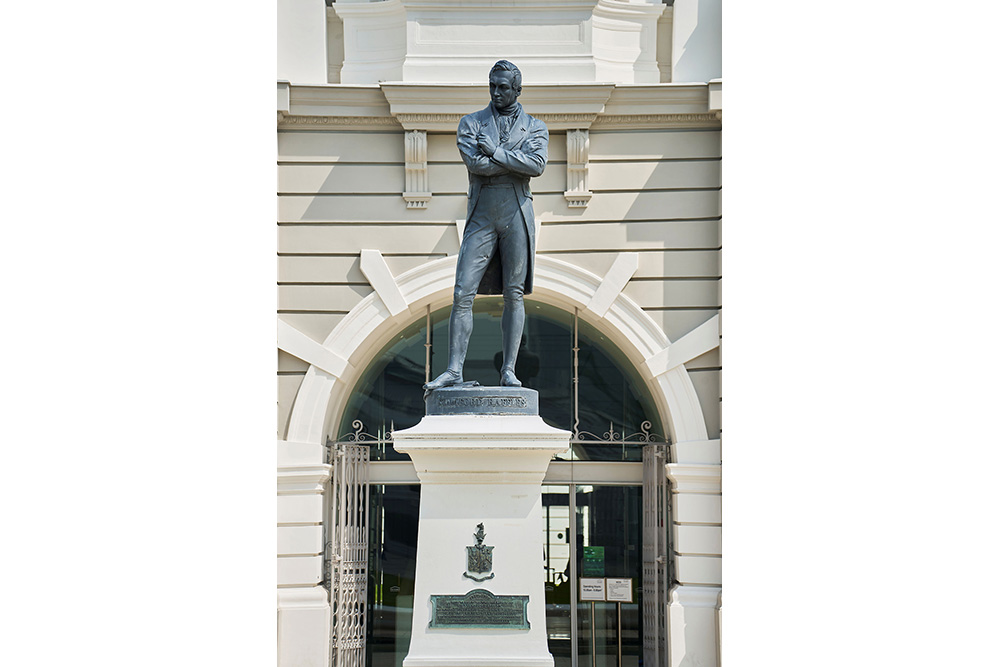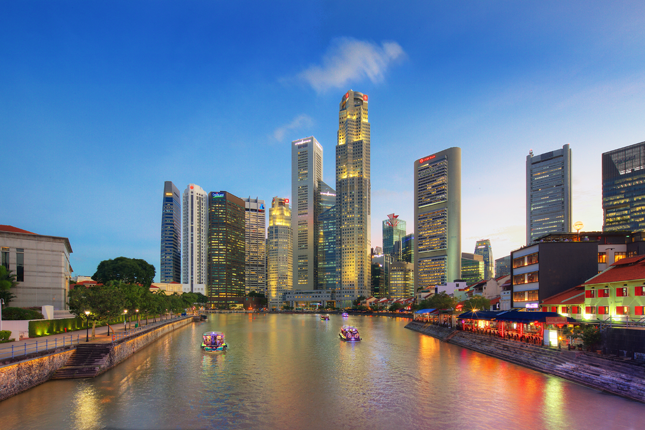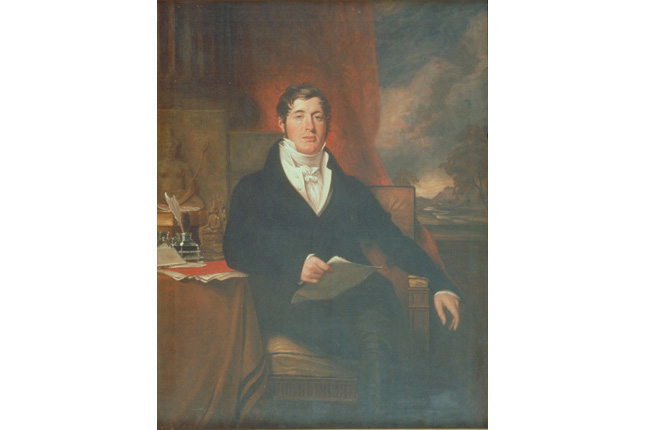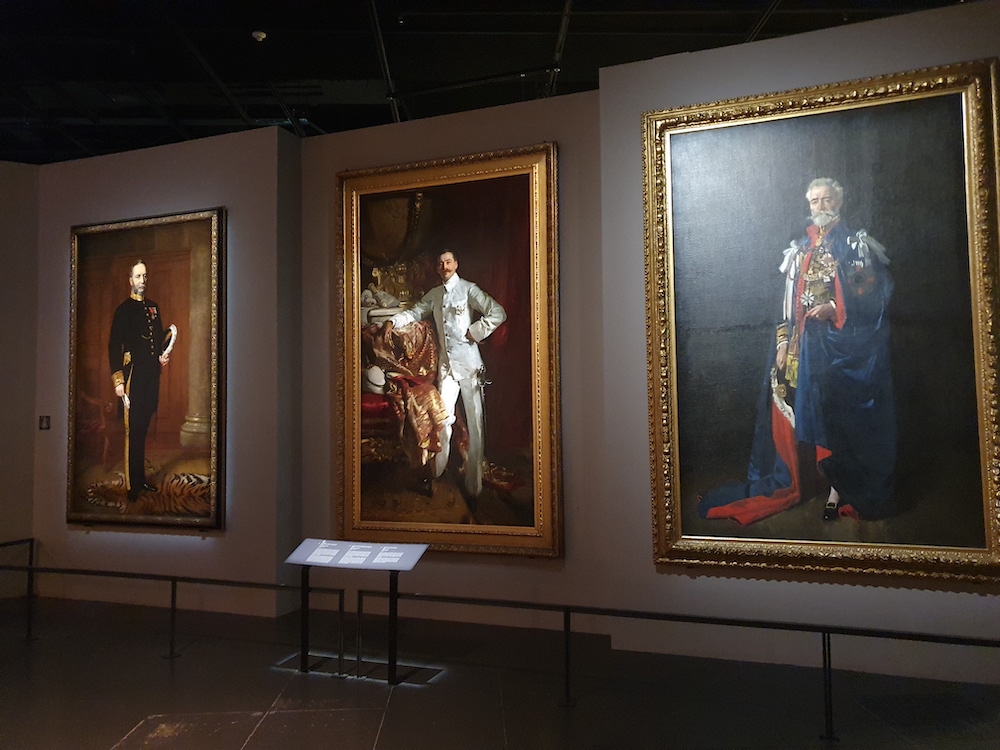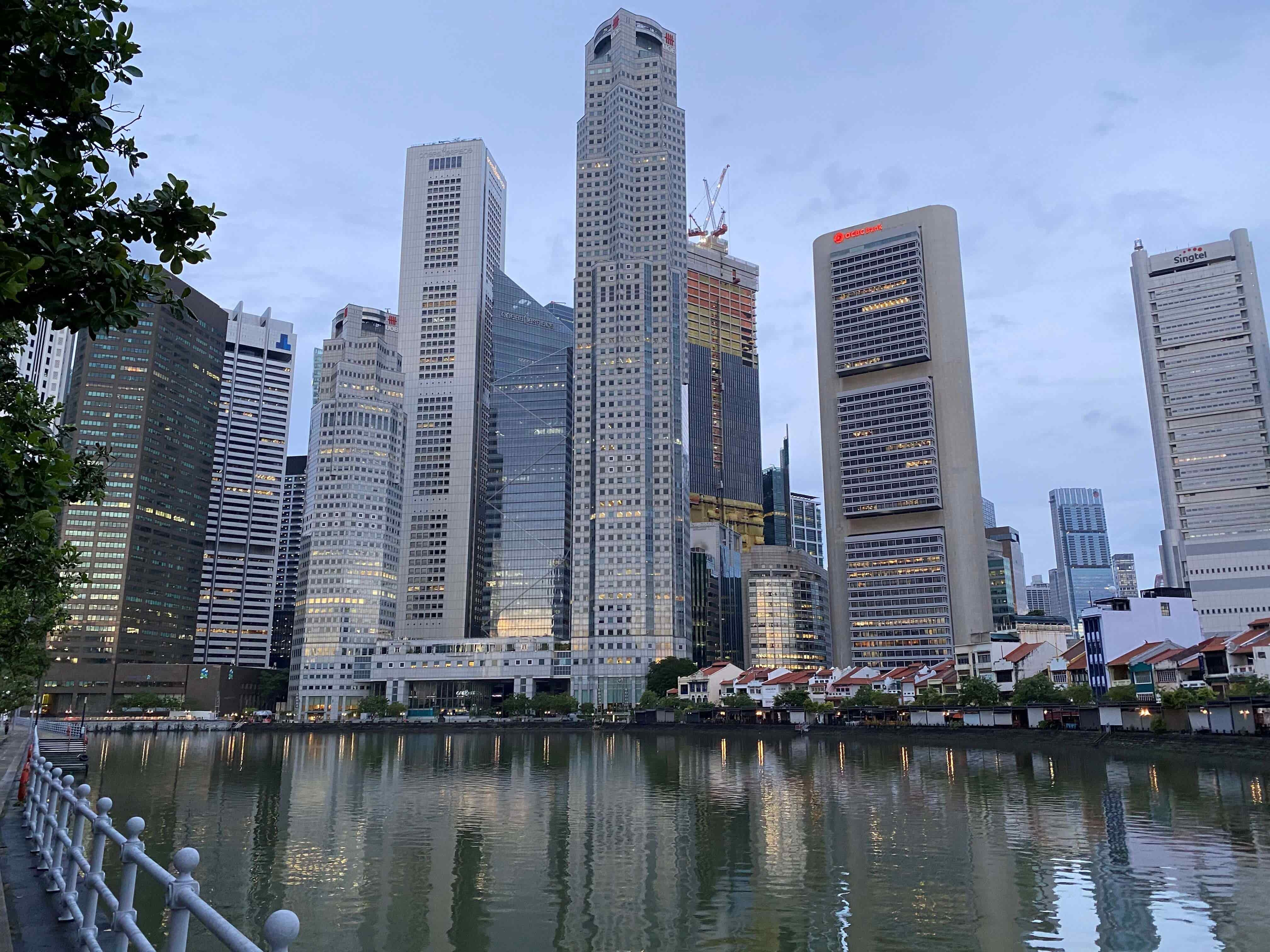The first statue of Sir Stamford Raffles, the man who established a British settlement at Singapore in 1819, was unveiled at the Padang by then Governor Sir Frederick Weld in 1887 to mark Queen Victoria’s Golden Jubilee. Created by the famous sculptor and poet Thomas Woolner, the black, eight-foot-tall bronze statue was affectionately nicknamed ‘orang besi’ (iron man). In 1919, the centenary year of the founding of colonial Singapore, the statue was moved from the Padang to a site in front of the nearby Victoria Memorial Hall. A colonnade was added to frame the statue, which was unveiled by then Governor Sir Arthur Young. The statue was removed and stored in a museum storeroom during the Japanese Occupation (1942-1945). In 1946, the statue was reinstated, without the colonnade, at its pre-war site by then Governor Sir Franklin Grimson. Following Singapore’s independence in 1965, the government, on the advice of Dutch economic advisor Albert Winsemius, decided to let the statue remain as a symbol of the country’s colonial past. A polymarble replica (left centre) of the original statue was cast and unveiled in 1972 on the north bank of the Singapore River behind the Old Parliament House. This site was believed to be where Raffles first landed in Singapore.




